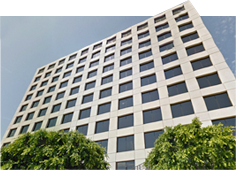New USCIS Policy on Unlawful Presence Bar
On June 24, 2022 USCIS issued new policy guidance pertaining to the unlawful presence bar at Immigration and Nationality Act (INA) §212(a)(9)(B). The new USCIS guidance states that “a noncitizen who again seeks admission more than 3 or 10 years after the relevant departure or removal, is not inadmissible under INA §212(a)(9)(B) even if the noncitizen returned to the United States, with or without authorization, during the statutory 3-year or 10-year period.”
Note that the new guidance does not address or otherwise eliminate inadmissibility issues due to the permanent bar at INA §212(a)(9)(C) or the inspection and admission requirement for adjustment of status, notwithstanding the reference in the policy to a return to the United States “without authorization.”
The new USCIS guidance is greatly appreciated as the policy from the earlier legacy INS correspondence was not included in the consolidated unlawful presence guidance issued in 2009 or in the USCIS Policy Manual, which resulted in inconsistent application of how the waiting period of inadmissibility under INA §212(a)(9)(B) was determined amongst local offices. Overall, the guidance formalizes two previous legacy INS letters and previous case law, and conforms to the statutory language. For purposes of serving the INA §212(a)(9)(B) 3– or 10-year bars, the new guidance confirms that location of the person does not matter—the bars can be served in whole or in part inside the United States. The guidance is unequivocal: “a noncitizen’s location during the statutory 3-year or 10-year period and the noncitizen’s manner of return to the United States during the statutory 3-year or 10-year period are irrelevant for purposes of determining inadmissibility under INA §212(a)(9)(B).”
For those subject to the Unlawful Presence bars, the INA §212(d)(3) nonimmigrant visa waiver excuses a wide range of grounds of inadmissibility (but not all) to the United States, including unlawful presence, likely the only immigration law violation of most undocumented foreign nationals. Under Matter of Hranka, 16 I&N Dec. 492 (BIA 1978), the waiver review considers three factors: the risk to society if the applicant is admitted, the seriousness of the applicant’s immigration or criminal violation, and the “nature of the applicant’s reason” for wanting to be in the United States. There is also an element of discretion, which in the context of an overstay or unlawful presence, is often the length of time of the overstay/unlawful presence.
The current process for pursuing the §212(d)(3) waiver typically requires spending at least several months abroad waiting for a decision, as the waiver application can generally only be submitted at or after the consular interview after which it is forwarded by the consulate to the CBP Admissibility Review Office for further processing.






